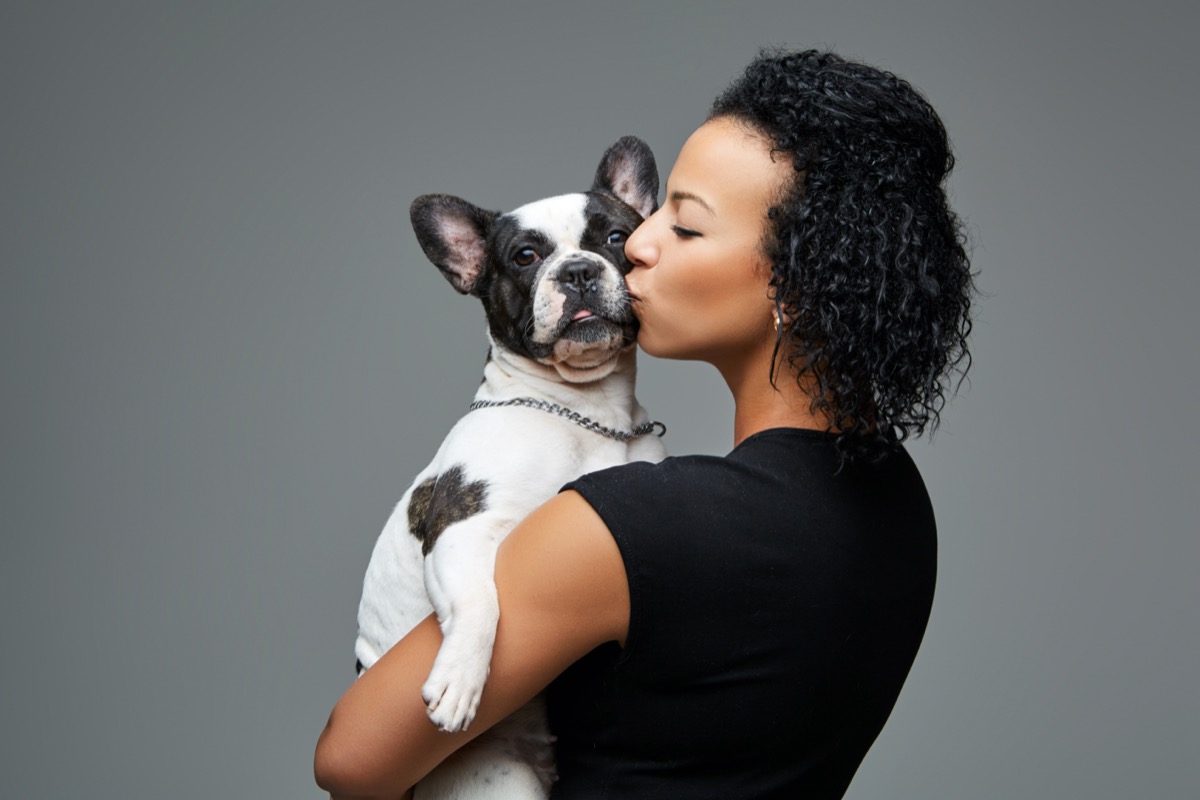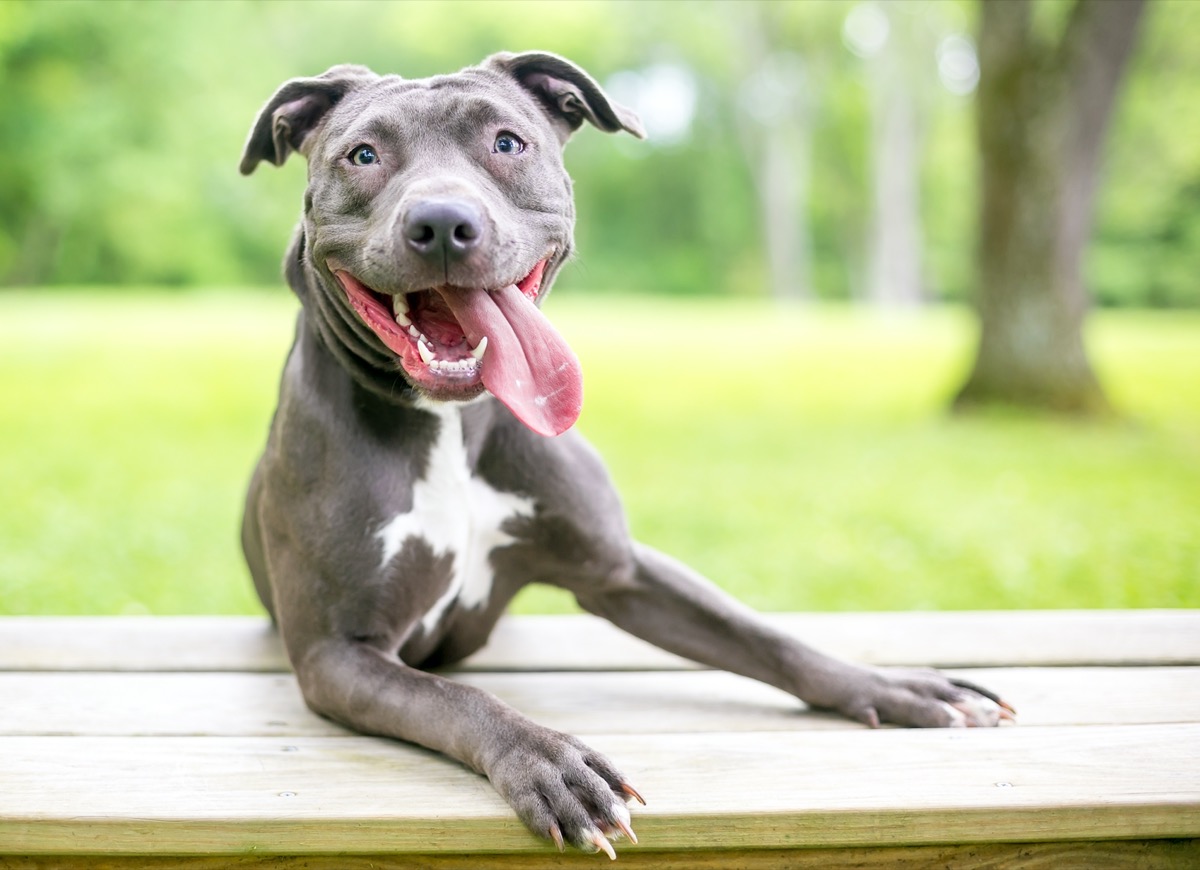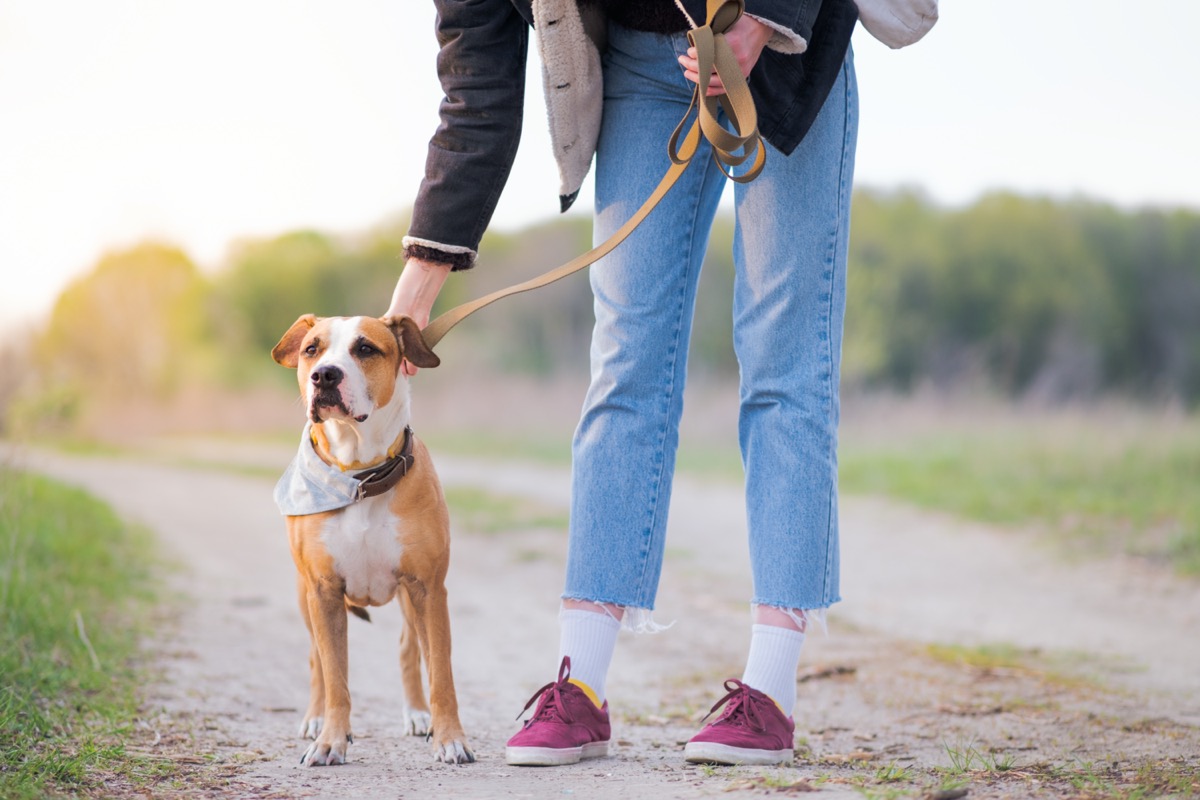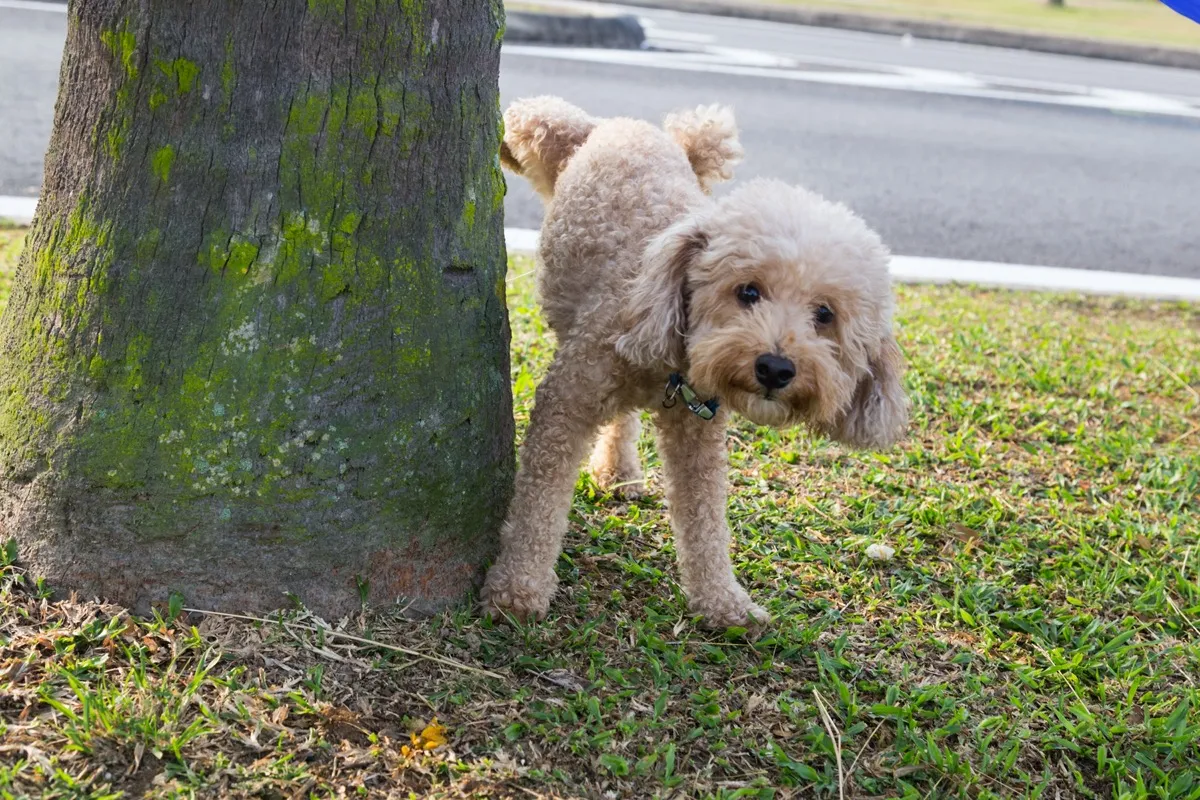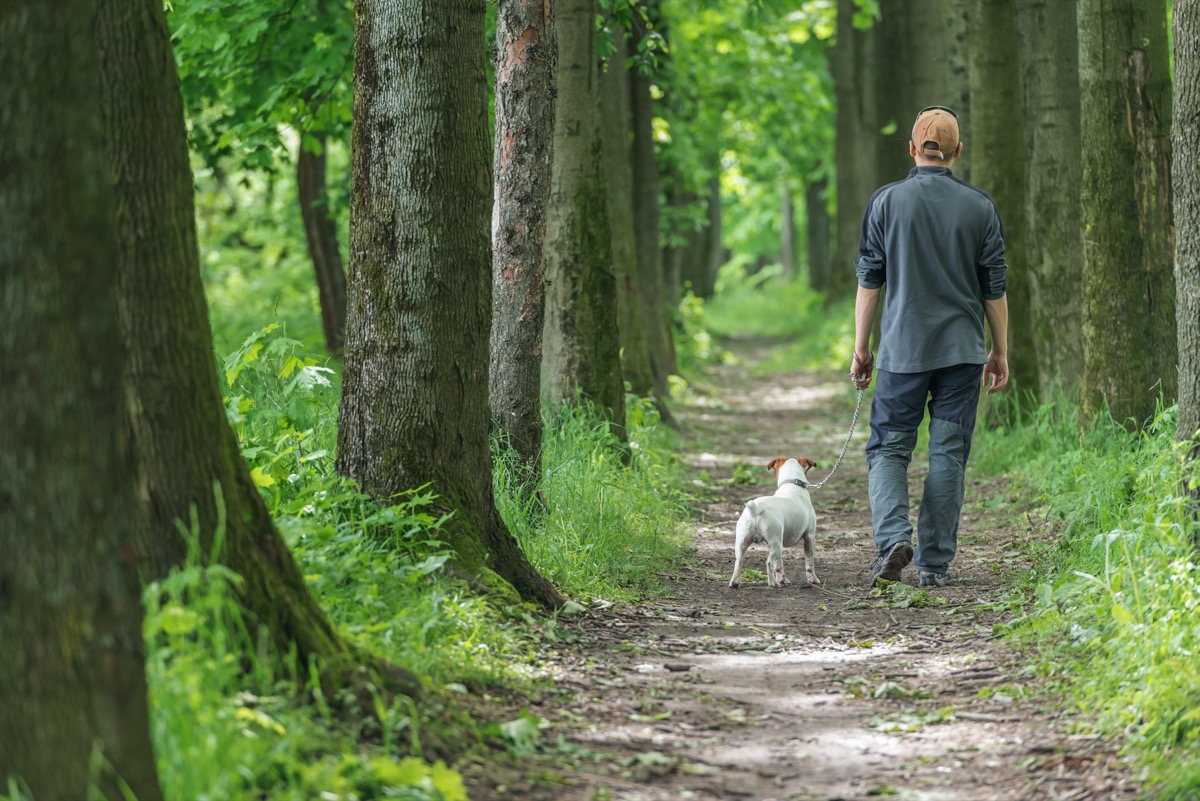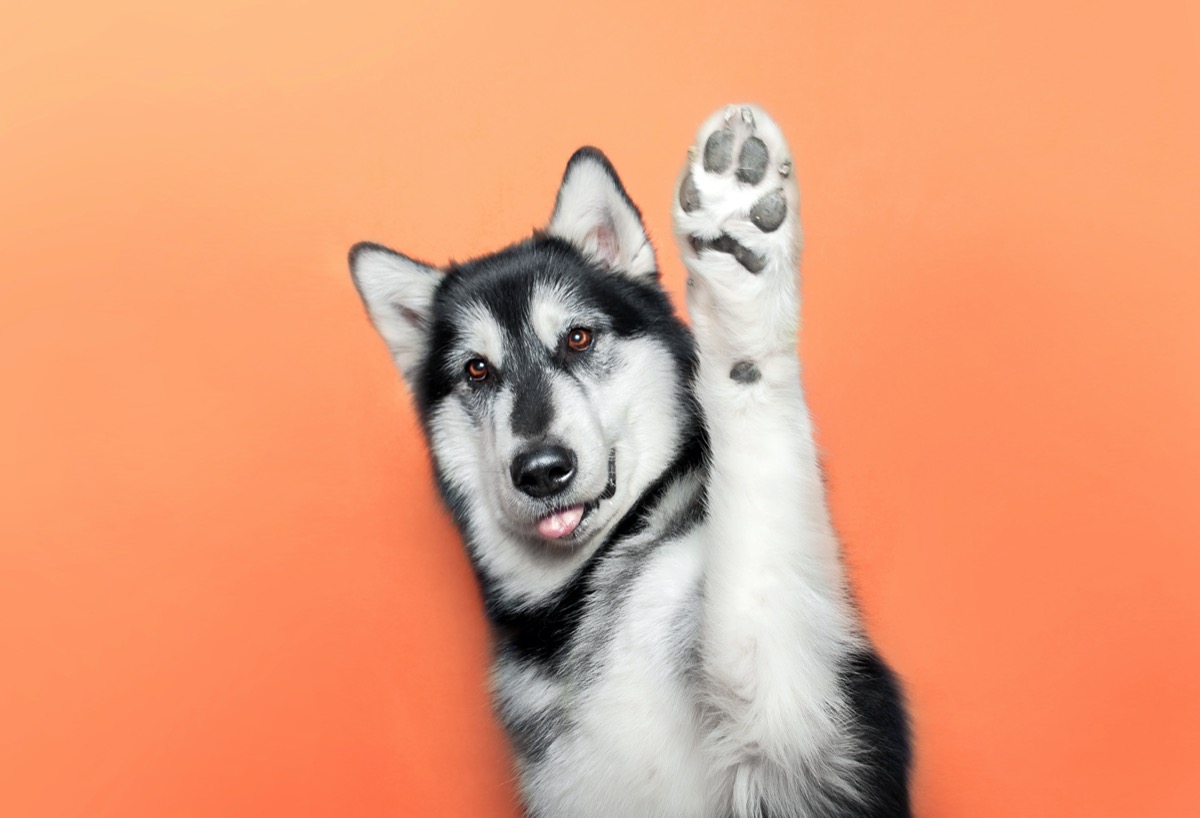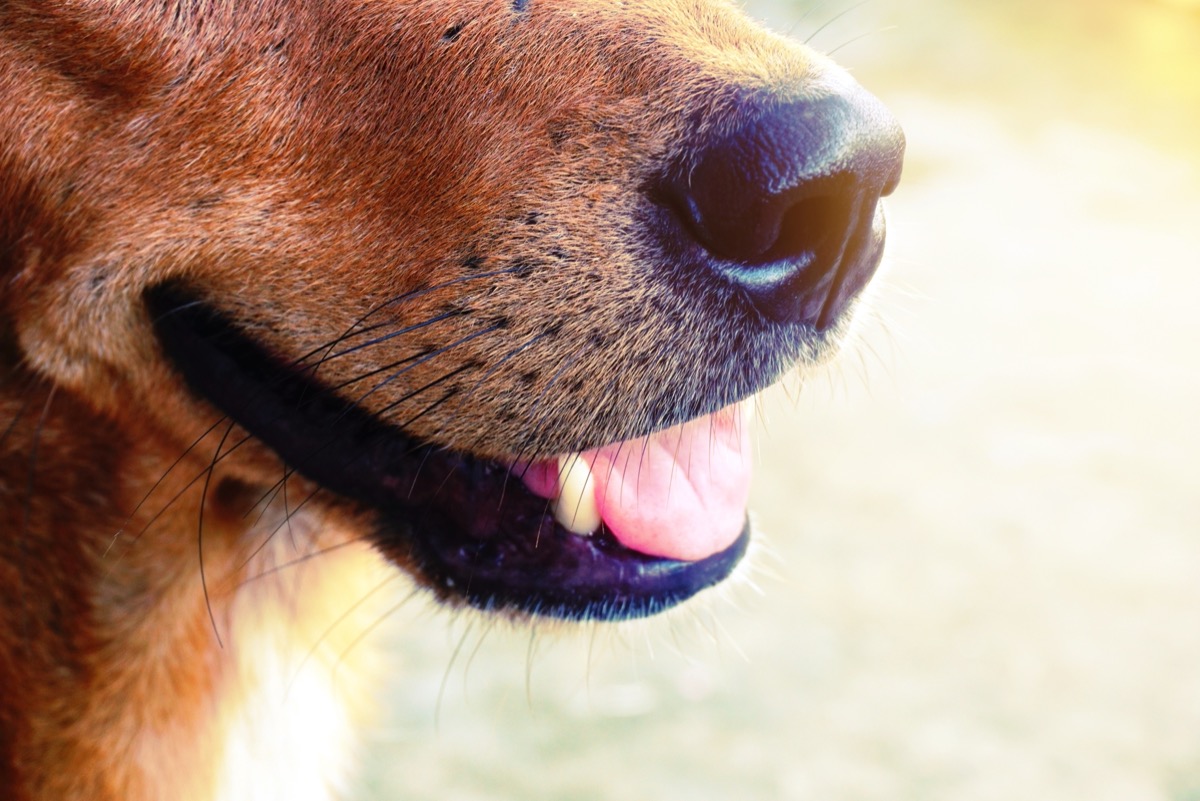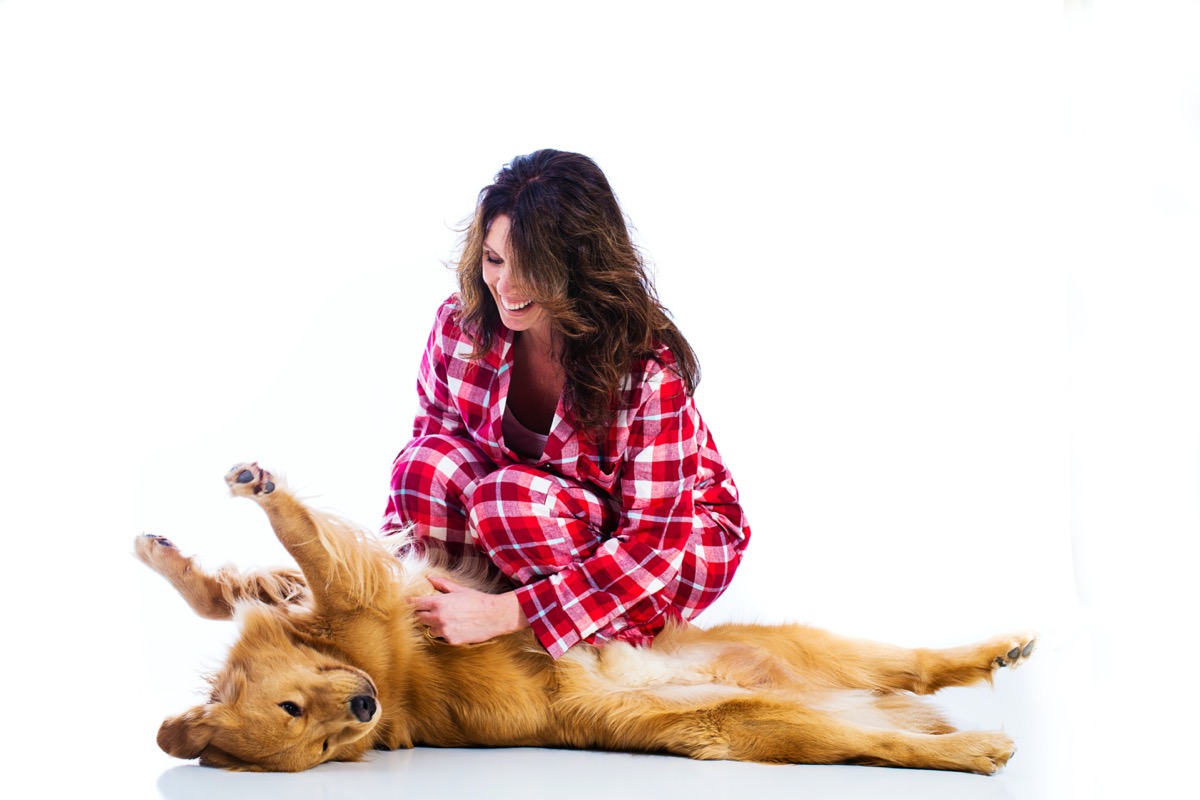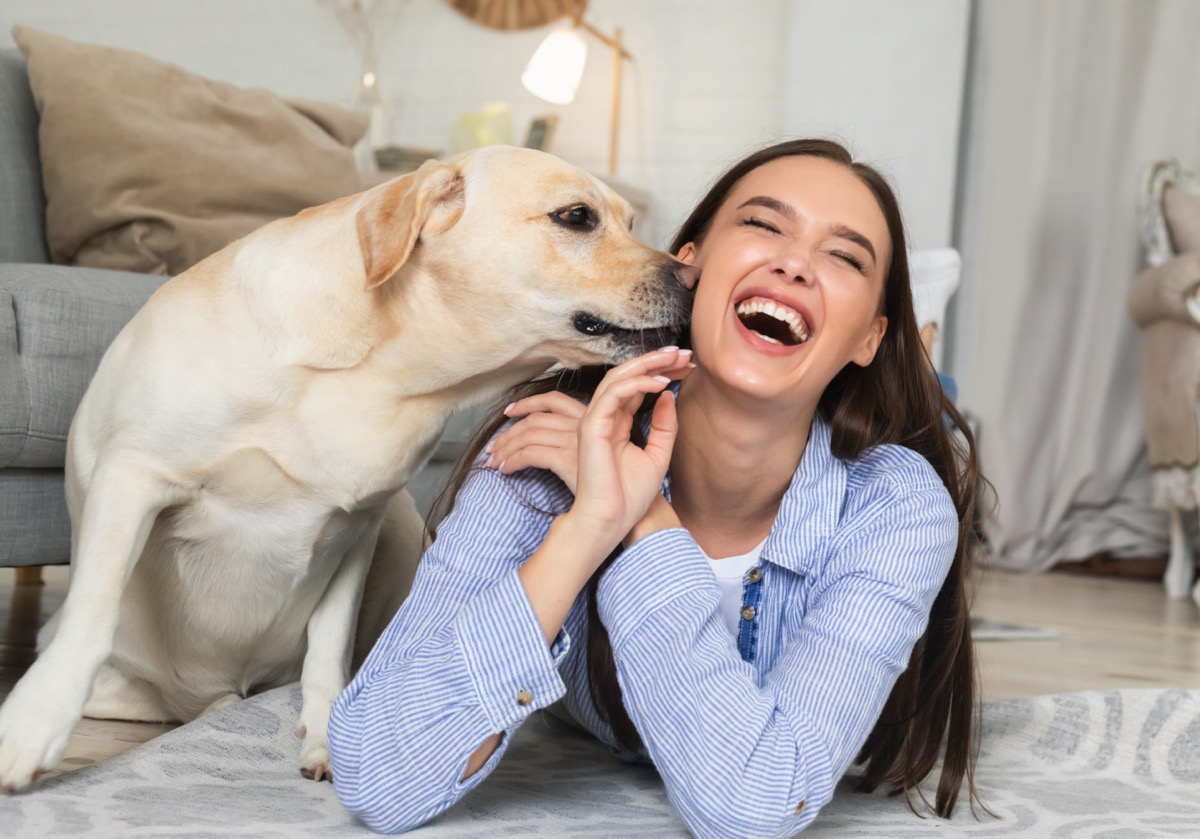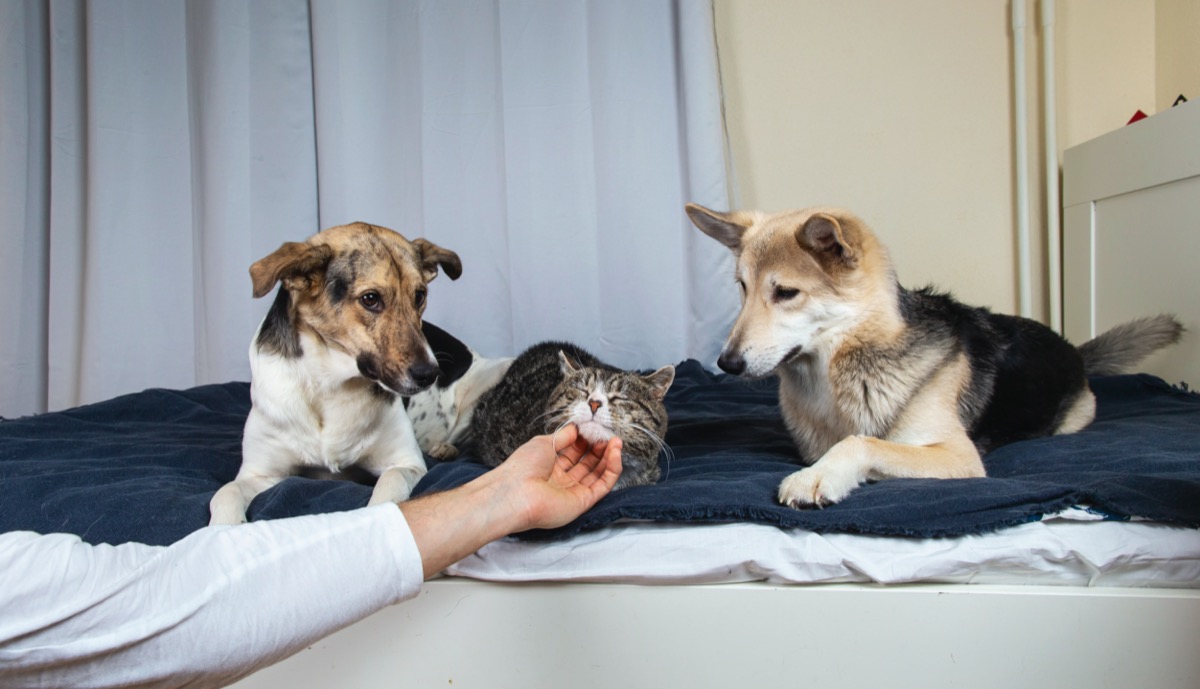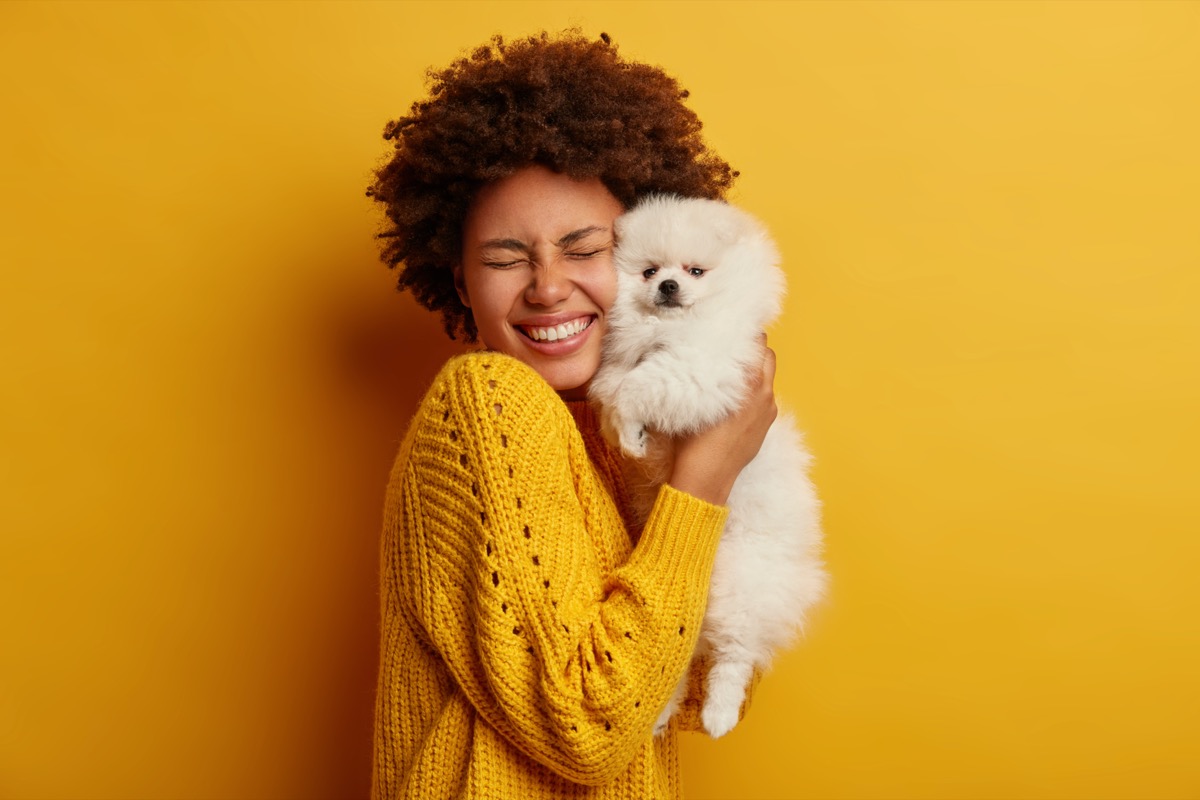They’re good for more than just taking scritches. These 18 muscles allow dogs to move their ears in intricate ways, which is important to picking up sounds. Plus, your dogs ears can give you a clue as to how they’re feeling: If they’re laying flat back against their head, your pooch may be scared. If they’re pointing straight up, they’re alert and on the case. RELATED: You’ve Been Calculating Your Dog’s Age Wrong, New Study Says. Dog noses have unique patterns that can serve to identify them, similar to human fingerprints. And in April 2021, dog food company IAMS launched an app that uses this fact to help reunite lost pups with their owners. After you download NOSEiD, scan your pet’s nose and upload it to their database. If they ever escape your yard, any concerned human who finds them can search the app for a match. Thanks to science, you can know, for a fact, that your dog loves you back. A 2015 study at Azabu University in Japan found an uptick in the level of oxytocin (sometimes known as “the love hormone”) in both dogs and their owners when they stare at each other.ae0fcc31ae342fd3a1346ebb1f342fcb Dogs have sweat glands only on their paws, not the rest of their bodies. That little surface area isn’t enough to cool them down, however, which is why they ventilate and exchange heat through panting. In addition to being able to move in various ways, dogs’ ears are also able to detect much higher frequency sounds than human ears. In fact, dogs can hear sounds that are two times beyond our range—and it appears small dogs are actually better at it. According to Science Focus, that’s because the smaller a mammal’s head is, the higher frequencies it can pick up and compare in each ear. That’s how they (and we) figure out where sounds are coming from. Dogs are not, in fact, trying to clumsily bury their poop when they scratch the ground after they go. They are just performing yet another territory-marking ritual. With the glands on their paws, they spread their scent and let other dogs know they are around. Dogs’ urine contains markers that inform other dogs of its presence, social standing, and sexual availability. Dogs lift their legs as high as they can so they can “distribute their message” better and allow its scent to travel further. A 2018 study found that smaller dogs try to lift their legs even higher so that they seem bigger to other dogs who may be around. RELATED: This Is the Most Aggressive Dog Breed, New Study Says. The presence of a leash, the sex of the owner, and the sex of the dog all play a part in the aggressiveness of a dog when they’re being walked. Dogs being walked by men are four times more likely to attack and bite another dog. Why? Because dogs not only react to the behavior and posture of other dogs around them but also to people. Not only do dogs dream as they sleep, scientists think that they dream similarly to us and replay moments from their day. You can tell that a dog is dreaming if they are twitching their legs or bark in their sleep. Additionally, small dogs have more dreams than big dogs. Your dog averts his eyes and adopts a submissive posture after you catch him chewing something he’s not supposed to. That means he knows that he’s done something wrong and is sorry for it, right? Well, probably not, scientists say. It’s more likely that the behaviors that owners associate with a dog’s guilt are their reaction to being scolded. They simply don’t think as deeply about their transgression as you do. Some of them are ambilateral, meaning that they don’t favor either side, but some dogs have a dominant paw. Unlike humans, who are far more likely to be right-handed, dogs are pretty equally likely to have a dominant right paw, a dominant left paw, or no particular preference. Back in 2009, per CNN, psychologists discovered that dogs are capable of learning the same amount of words and commands as a human toddler—specifically, a two-year-old child. The average dog can understand about 165 words, while the smartest of the smart can go up to 250. That’s a clever canine! Dogs’ whiskers are packed with nerves and send sensory messages to their brains. They’re multifunctional sensory tools that help them move around and orient themselves in tight places, especially when visibility is low. For more facts sent right to your inbox, sign up for our daily newsletter. Dogs cannot see the same colors that we do, but they are not colorblind. They have two color receptors, while humans have three. If you were to see the world through your dog’s eyes, you’d see everything in shades and combinations of blue and yellow. Animal psychologists say dogs can be stressed and unhappy when they are hugged, because they see having a limb thrown over them as a sign of dominance. They’ll convey that stress by licking their lips, looking away, or folding their ears. So go for a belly rub over an embrace whenever you want to show your pet some love. Dogs use their sense of smell to work out how humans are feeling. Studies show that they can detect both feelings of stress and fear as well as happier emotions. But there’s no evidence to suggest that dogs act more aggressively when near a fearful human; in fact, they tend to mirror that emotion. The sound frequencies produced during storms can actually be painful to your dogs’ ears. Also, the static electricity that accumulates in their fur due to change of pressure can be unpleasant. So when dogs are freaking out during storms, they’re not just unsure of what’s happening—they may be experiencing a painful physical reaction. If you have more than one dog, you may have noticed that one will act perturbed when the other one is receiving treats or attention. A study done at the University of Vienna had dogs perform an easy trick for a food treat, only after a period of time, only one dog in the group would receive the reward. The other dog would not only refuse to keep doing the trick but also showed signs of stress. When they repeated the experiment with just one dog in the room, that dog would keep doing the trick for a longer period after the treats stopped coming. This indicates that dogs do feel some form of jealousy. Smaller dogs tend to live longer than bigger dogs, and that’s because larger dogs age faster. Within one study, large dogs were found to have a median lifespan of 13.38 years, while the median for small dogs was 14.95. Not only do dog owners tend to live longer than people without dogs, dog owners are also more likely to survive and recover from major health events, such as heart attack or stroke. Why? “Interacting with dogs can boost your production of ‘happy hormones’ such as oxytocin, serotonin and dopamine,” says the American Heart Association. “This can lead to a greater sense of well-being and help lower levels of the stress hormone cortisol. And having a dog can help lower blood pressure and cholesterol, ease depression and improve fitness.” RELATED: This Is the Most Dog-Friendly U.S. City in 2021, Data Shows.


